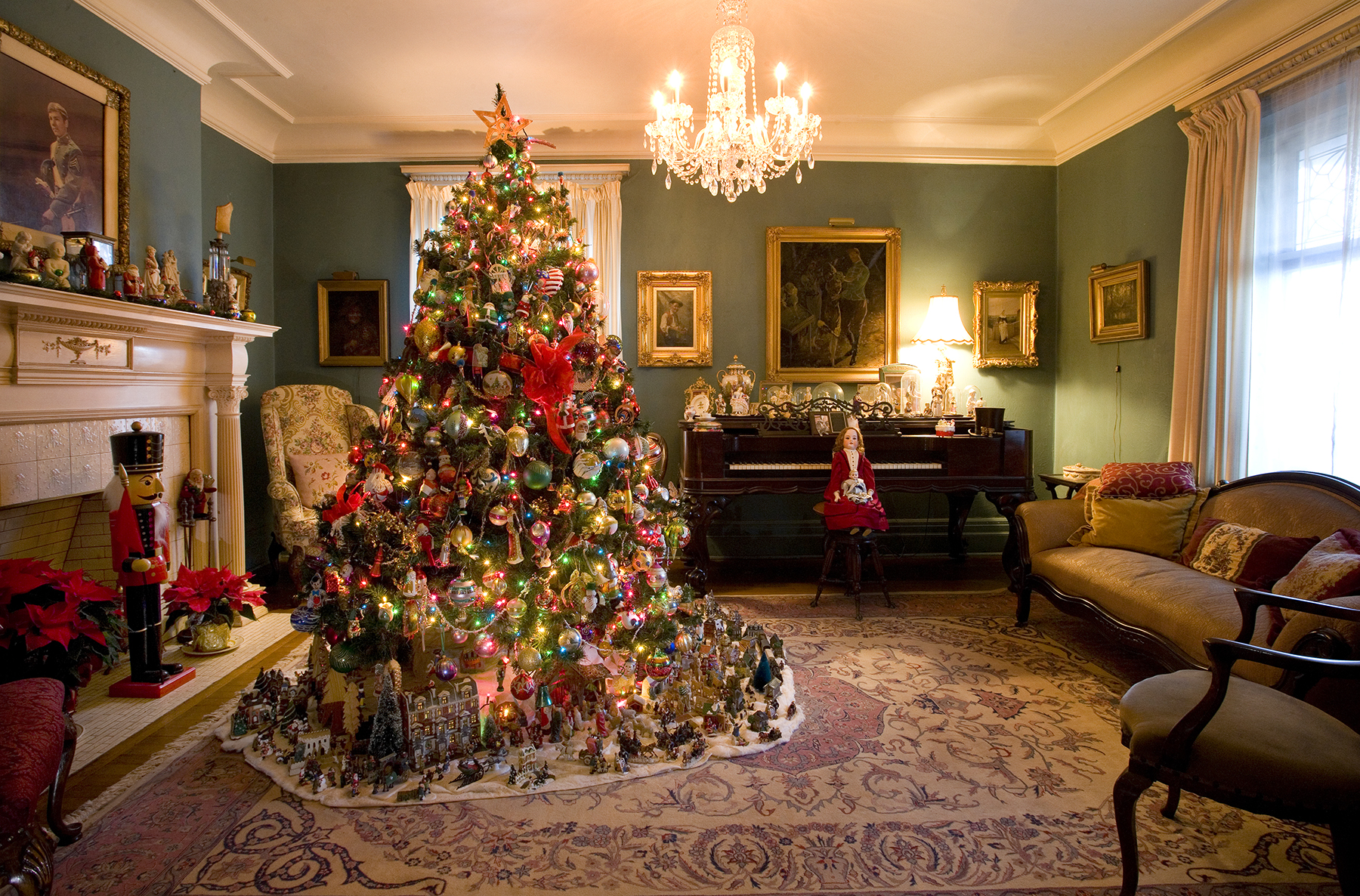On Christmas Eve more than a century ago in New York, Clement Clarke Moore’s sleigh slid over the snow in the light of a full moon. He had one hour to keep his promise to write a holiday poem for his children. Moore glanced at his driver—a Dutch handyman named Peter. The man’s nose was red, and his belly shook as he sneezed in the cold night air. Moore was inspired.
By the time they reached home, he was reciting: “His eyes how they twinkled! His dimples, how merry! His cheeks were like roses, his nose like a cherry.’’ The resulting 14-stanza poem, “A Visit from St. Nicholas,” is better known for its first line, “‘Twas the night before Christmas.” The poem remains the bedrock of the Swaney family Christmas. After we decorate the 14-foot blue spruce Christmas tree with some 300 antique decorations, family members in frayed frock coats stand in front of the living room fireplace and deliver, from memory, Moore’s holiday classic. This tradition began when my grandmother became too feeble to read the poem, and my father then stepped in to lend a hand at reading the poem, which he knew by heart after all the years of hearing it from his mother. The poem also was an inspiration for my father to hand-carve a set of three hobbyhorses one Christmas for the family. The hobbyhorses now sit in several downstairs rooms over the holiday season, each with a pudgy Santa Claus toy as the jockey.
The tradition of making handmade gifts stuck; every Christmas since 1953, my family has been blessed with handmade gifts ranging from music boxes and delicate wooden bracelets to hand-knit argyle socks and a giant nutcracker that still stands guard over Christmas presents underneath the tree every holiday. After we decorate the tree, we take a break for some eggnog laced with apricot brandy. And then we sing Christmas carols, accompanied by three turn-of-the-century Regina music boxes. Christmas Eve may be winding down, but our last two tasks before heading to bed are hanging our stockings by the fireplace and making sure all of Mom’s antique dolls are wearing their holiday garb. One doll, in particular, is placed on a chair with a sheaf of wheat, facing the Christmas tree, in memory of my late mother. She was an avid doll and antique collector. In fact, Clement Clark Moore would be right at home at my house in Pittsburgh because we still have functional, old-fashioned dial telephones and no television.
Christmas Day arrives with more novel traditions. We pop out of bed and immediately race to the living room to open gifts. Before we can open them, the family gathers around the Christmas tree to sing “Auld Lang Syne,” written by the great Scottish poet Robert Burns. My family has roots in Scotland, Wales, and Ireland. While some family members clean up the gift wrappings, a handful of relatives head to the kitchen to prepare the evening meal. For the past 40 years or more, it has always been the same menu: baked salmon appetizer, turkey, mashed potatoes and gravy, homemade stuffing—with a pinch of love, as my grandmother used to say—homemade dinner buns, caramelized brussels sprouts, and Hungarian spice cake for dessert. The spice cake is from the recipe book of my father’s beloved nanny Mariska, who came to live with my father and my grandmother after my grandfather’s death in 1930. Dinner is concluded by a family pledge that my mother created in 2005: “May the many happy moments shared by us in the forthcoming holidays be kept always in our hearts and memories.’’ The day concludes with a reading of the Christmas story in the Bible and a few long kisses under the hallway mistletoe. I’ve learned to enjoy every moment of Christmas, because there are no rewinds.













